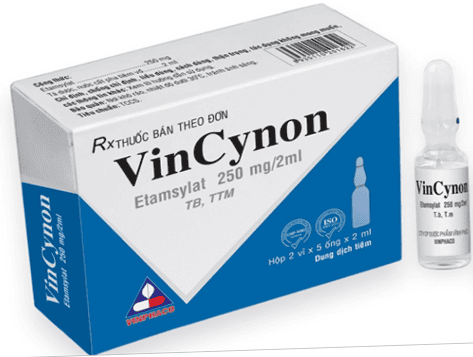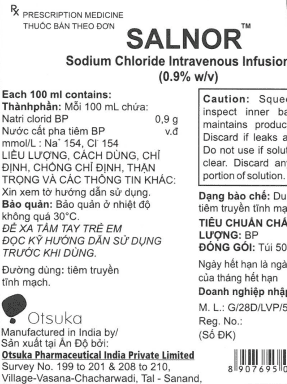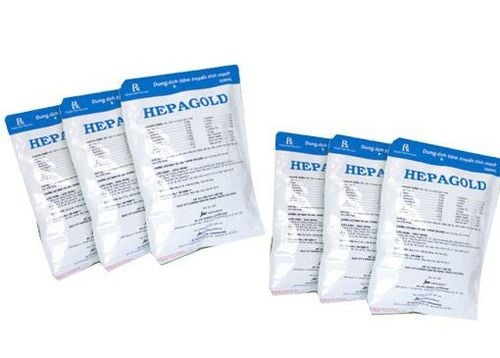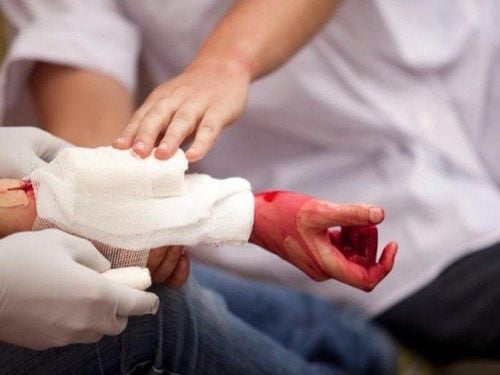This is an automatically translated article.
The article is professionally consulted by Specialist Doctor I Tran Thi Ngat - Department of General Surgery - Vinmec International General Hospital Da Nang.Blood lost during surgery is low in red blood cells and high in plasma. Preoperative blood dilution aims to create a stable hemodynamic state for the patient and limit the transfusion of allogeneic blood.
1. An outline of preoperative blood dilution
Preoperative blood dilution was performed in subjects who were free of vital dysfunction and were not severely anemic. At this point, we can perform one or more blood units removed from the body, the missing blood volume will be compensated immediately with crystal solution or colloidal solution. Fresh blood after being taken out must be preserved under standard conditions to be retransfused into the patient's body as soon as the blood loss due to surgery ends.Depending on the patient's condition to calculate the appropriate number of blood units, usually the hematocrit value after blood collection must be approximately 30%.
2. Indications and contraindications of the method
IndicationSurgery in which the patient is likely to lose a lot of blood, more than 1 liter. Adults performing heart surgery, tumors, orthopedic trauma. Vital organ problems without impairment, ASA health criteria I and II, initial hematocrit greater than or equal to 35%. Contraindications
ASA Health Criteria III, IV, i.e. impaired vital functions, severe infection, lack of circulating volume. Suffering from diseases with a high risk of infection such as HIV, hepatitis,... In surgeries, the amount of blood taken out is more than the amount of blood lost. Do not work in hospitals that do not have enough facilities and tools.
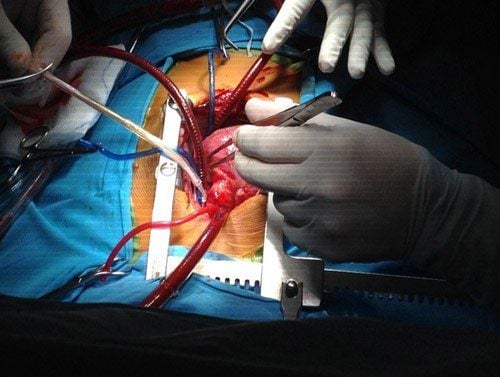
3. Preparation before performing blood dilution
The performing physician must specialize in hematology and blood transfusion, and the anesthesiologist must be trained in blood dilution techniques. The machine monitors hemodynamic indicators such as arterial blood pressure, electrocardiogram, capillary oxygen saturation. Hematocrit analyzer Blood collection kit: needle, blood collection line Blood storage kit: blood bottle or bag containing CPD or ACD anticoagulant, refrigerator.4. Action to proceed
4.1. Calculate the maximum amount of blood that can be drawn in the patient
body volume. V1 = 70mL x P kg. Try the initial Hct1 value and then calculate the amount of blood that can be drawn to reduce it to 30% using the following formula: V2 = (Hct1 - 30) x V1/Hct1 The V2 value is the amount of blood we can draw from patient's body before surgery.4.2. Steps to take
Before performing a blood draw for dilution, it is necessary to inform the patient in advance of the procedure to be performed, the purpose of the blood dilution, the possible risks for the patient's cooperation. However, the procedure is very simple, just like a regular blood draw in the hematology department.Steps to draw blood:
Use a 14G or 16G metal needle to poke the elbow vein (can be poked in the basilar or brachial vein). After the blood comes out, keep the blood bag lower than the patient so that the blood can come out according to the weight, do not put the garo in the hand to draw blood. During blood collection, it is necessary to shake the bottle well to dissolve the anticoagulant solutions. The hand that does not draw blood will receive a continuous infusion of glue or crystalloid to maintain the principle of rehydration. The amount of fluid replaced by the body must be 3 times the amount of blood lost. If using Haemaccel or Gelafundin glue, HAES 6%, the amount of compensation only needs to be 1.5 times the amount of blood removed. If compensated with crystalloid solution, the amount of replacement fluid is 3 times the amount of blood removed. If 4% albumin or 10% HAES is used, the infusion ratio is 1:1.
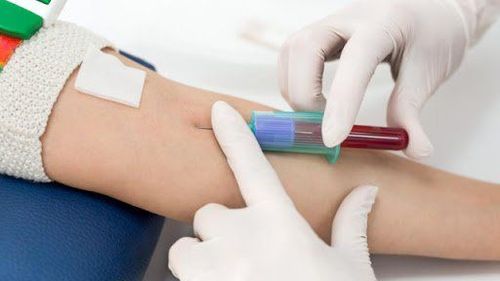
4.3. Estimated time
If the surgery or minor surgery takes less than 1 hour, the blood should be preserved in the operating room so that it can be retransfused to the patient after it is finished.If the surgery takes more than 2 hours, the blood should be stored in the refrigerator for retransfusion after the surgery is complete.
On each blood bottle, it is necessary to clearly and fully write the following information:
Full name of the disease being acquired. Date and time of blood collection. The person taking the blood draw.
4.4. How to make up for blood
After surgery, the doctor will evaluate the patient's ability to lose blood to retransfuse the blood taken. In case blood loss due to surgery is too much, the Hct index drops to less than 25%, we have to make up for the blood taken from the patient first.If after resuscitation, the Hct level is still less than 25%, then allogeneic blood transfusion must be considered.
Blood dilution is often used in surgeries where a large amount of blood loss is anticipated. To perform this method, it is necessary to consult a hematologist to avoid unnecessary errors.
Vinmec International General Hospital is a high-quality medical facility in Vietnam with a team of highly qualified medical professionals, well-trained, domestic and foreign, and experienced.
A system of modern and advanced medical equipment, possessing many of the best machines in the world, helping to detect many difficult and dangerous diseases in a short time, supporting the diagnosis and treatment of doctors the most effective. The hospital space is designed according to 5-star hotel standards, giving patients comfort, friendliness and peace of mind.
Doctor Ngat has more than 15 years of experience as an Anesthesiologist and resuscitator at Hospitals: Da Nang Obstetrics and Gynecology Hospital, Hospital 199 of the Ministry of Public Security, Tam Tri Hospital in Da Nang. Currently, he is an anesthesiologist at the Department of General Surgery - Vinmec Da Nang International General Hospital.
Please dial HOTLINE for more information or register for an appointment HERE. Download MyVinmec app to make appointments faster and to manage your bookings easily.
See more:To prevent the body from iron deficiency anemia How to treat iron deficiency anemia? Causes, symptoms and principles of nutrition for patients with anemia





